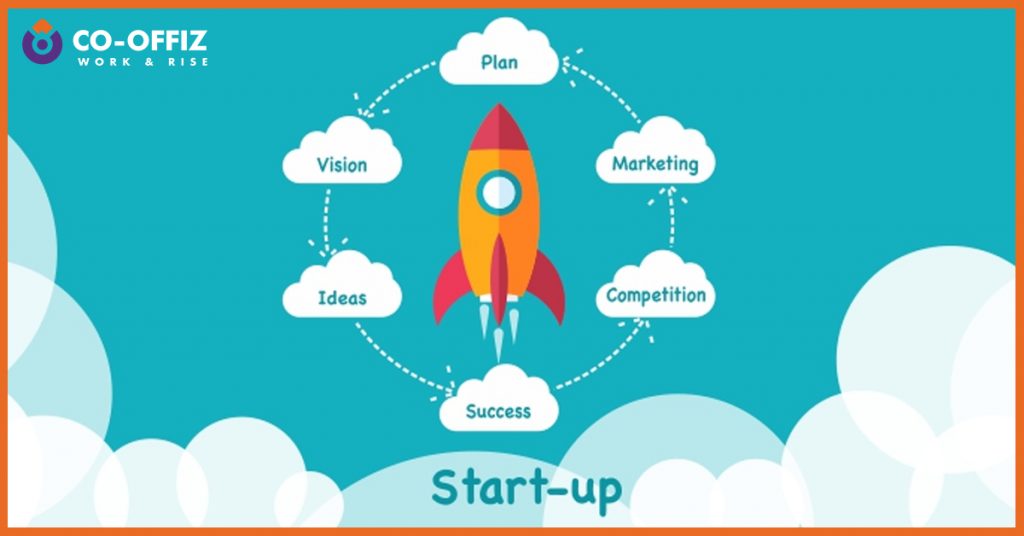14 Strategies To Help Your Startup Survive Its First Year
The first year of a startup’s journey is a make-or-break period filled with excitement, innovation, and challenges. For entrepreneurs, navigating this pivotal phase is crucial to turning their vision into a successful and sustainable business. By implementing the right strategies for startup success in the first year, you can lay the groundwork for growth and longevity.
This blog will guide you through 14 essential strategies that cover key aspects like market research, financial management, customer-centric approaches, and resilience. These proven tactics are designed to help your business thrive in its critical early stages.
Whether you’re an aspiring entrepreneur or already in the trenches, understanding these strategies for startup success in the first year will empower you to overcome obstacles and adapt to the ever-changing business landscape. Let’s explore these actionable steps to ensure your startup achieves its full potential during its foundational year.
14 Essential Strategies to Ensure Your Startup’s Success in Its First Year
1. Clear Vision and Mission: Lay the Foundation for Your Startup’s Success
A clear vision and mission are the guiding principles that set the direction and purpose for your startup’s success. They define your long-term goals, values, and the problem you aim to solve. Communicate them effectively to align your team and stakeholders, ensuring everyone is focused and committed to achieving your startup’s objectives.
Regularly review and refine them as your business evolves. A strong vision and mission are essential for surviving the critical first year and beyond.
2. Thorough Market Research
Thorough market research is crucial for the survival of your startup in its first year. It involves gathering and analyzing information about your target market, industry trends, competitors, and customer needs. This research helps you understand the demand for your product or service, identify potential customers, and determine the competitive landscape.
By conducting in-depth market research, you can uncover valuable insights that will inform your business strategy and decision-making. It allows you to identify opportunities and gaps in the market, tailor your offerings to meet customer needs, and position your startup for success.
Market research is an ongoing process that helps you stay ahead of changing market conditions and make informed choices to survive and thrive in your startup’s critical initial phase.
3. Build a Strong Team
Building a strong team is a fundamental aspect of ensuring your startup’s survival in its first year. A cohesive and talented team can effectively execute your vision, overcome challenges, and drive the business forward.
4. Agile Business Model
The Agile business model is an approach that emphasizes flexibility, adaptability, and responsiveness to changing market conditions. It involves iterative and incremental development, allowing businesses to quickly adjust their strategies and products based on customer feedback and market trends.
5. Financial Management
Financial management involves planning, organizing, and controlling a company’s financial resources to achieve its goals.
It includes budgeting, financial reporting, cash flow management, risk assessment, investment decisions, cost control, financing, tax planning, financial analysis, and compliance. Effective financial management is essential for a startup’s survival, growth, and success.
6. Customer-Centric Approach
A customer-centric approach means placing the customer at the center of all business decisions and strategies. It involves understanding customer needs, preferences, and pain points to create products or services that meet their demands.
By focusing on delivering exceptional customer experiences and building strong relationships, startups can gain customer loyalty, improve retention, and drive business growth.
7. Test and Iterate
Test and iterate is an essential process in which startups continuously test their products, services, or marketing strategies and make iterative improvements based on feedback and data analysis.
By adopting this approach, startups can identify what works and what doesn’t, refine their offerings, and ensure they meet customer expectations. It allows for a more agile and adaptive approach, leading to better results and increased chances of success in the long run.
8. Scalable Technology Infrastructure
Scalable technology infrastructure refers to setting up a flexible and adaptable system that can handle growing demands as a startup expands. It involves using technologies and platforms that can easily accommodate increased users, data, and transactions without compromising performance or stability.
By having a scalable technology infrastructure, startups can avoid disruptions, reduce downtime, and efficiently scale their operations to meet future needs. This enables them to focus on growth without being limited by technological constraints.
9. Marketing and Branding
Marketing and branding are essential for startups to establish a strong market presence and attract customers.
To reach your target audience, startups should promote their products or services through various channels. Utilizing digital marketing, social media, and content marketing helps build brand awareness and generate leads.
Branding focuses on creating a unique identity by designing a logo, defining core values, and crafting a compelling story that resonates with customers.
Together, these strategies help startups build customer loyalty, increase sales, and differentiate from competitors.
10. Lean Operations
Lean Operations is a systematic approach to streamline processes, eliminate waste, and improve efficiency in a business. It focuses on continuous improvement, minimizing inventory, empowering employees, and delivering value to customers.
11. Strong Network
Having a strong network is crucial for the success of a startup. It involves building and maintaining relationships with various individuals and organizations that can provide support, guidance, resources, and opportunities.
This network can include mentors, investors, potential customers, industry peers, suppliers, and other entrepreneurs. A strong network can open doors to new partnerships, collaborations, and valuable insights, helping the startup grow and overcome challenges.
12. Regulatory Compliance
Regulatory compliance refers to the adherence of a startup to the laws, regulations, and industry standards that govern its operations. This includes complying with local, state, and federal laws, as well as any industry-specific regulations that may apply to the startup’s products or services.
Ensuring regulatory compliance is essential to avoid legal issues, penalties, and reputational damage. It also helps build trust with customers, investors, and stakeholders, as they can be confident that the startup operates ethically and responsibly within the boundaries of the law.
13. Customer Acquisition and Retention
Customer acquisition and retention are critical aspects of growing a startup successfully.
- Customer Acquisition: This involves attracting new customers to your product or service. To do this effectively, startups need to identify their target audience, understand their needs and pain points, and create marketing strategies to reach and engage potential customers. Utilizing various marketing channels, such as social media, content marketing, paid advertising, and search engine optimization, can help attract a steady flow of new customers.
- Customer Retention: Retaining existing customers is equally important as acquiring new ones. Loyal customers not only bring repeat business but can also become brand advocates, promoting the startup to others. Providing exceptional customer service, personalized experiences, and addressing customer feedback are essential in retaining customers. Implementing loyalty programs and offering incentives can also encourage customers to continue their association with the startup.
By striking the right balance between customer acquisition and retention, startups can create a sustainable customer base and foster long-term growth. Happy and loyal customers can contribute significantly to the startup’s success and reputation in the market.
14. Stay Resilient
Entrepreneurship is a rollercoaster ride. Stay positive, adaptable, and resilient in the face of setbacks. Learn from failures and keep moving forward.
Conclusion: Strategies for Startup Success in the First Year
Surviving the critical first year of a startup requires more than determination—it demands strategic planning, adaptability, and a clear focus on the customer. By applying the right strategies for startup success in the first year, such as defining a clear vision, conducting thorough market research, building a strong team, and implementing effective financial management, startups can create a solid foundation for growth and resilience.
Incorporating scalable technology, lean operations, strategic marketing, and robust customer acquisition and retention practices are equally vital to thriving in a competitive business environment. These strategies for startup success in the first year are not just about surviving but positioning your business to grow and adapt in a constantly evolving market.
The journey of entrepreneurship is challenging, filled with setbacks and learning opportunities. Staying resilient, testing and iterating, and maintaining focus on these strategies for startup success in the first year will help you navigate obstacles and turn challenges into stepping stones. With perseverance, dedication, and the right approach, your startup can thrive and achieve lasting success.
About CO-OFFIZ : Coworking Space in Delhi-NCR
CO-OFFIZ is a coworking space in Delhi-NCR tailored for young professionals, startups, freelancers, and entrepreneurs. We emphasize a collaborative work culture that enhances productivity while providing a hassle-free and aesthetically pleasing environment based on Vastu principles.
Our modern amenities include high-speed internet, unlimited tea/coffee, breakout zones, power backup, and CCTV security. Our vibrant meeting rooms feature LED TV projectors and ergonomic chairs, fostering an ideal workspace.
With locations in in Preet Vihar (East Delhi), Janakpuri (West Delhi), Netaji Subhash Place (North Delhi), Noida Sec-63 and Gurugram Sec-58, we offer flexible seating, dedicated desks, and private cabins at competitive prices, all conveniently located near metro stations for easy access.



